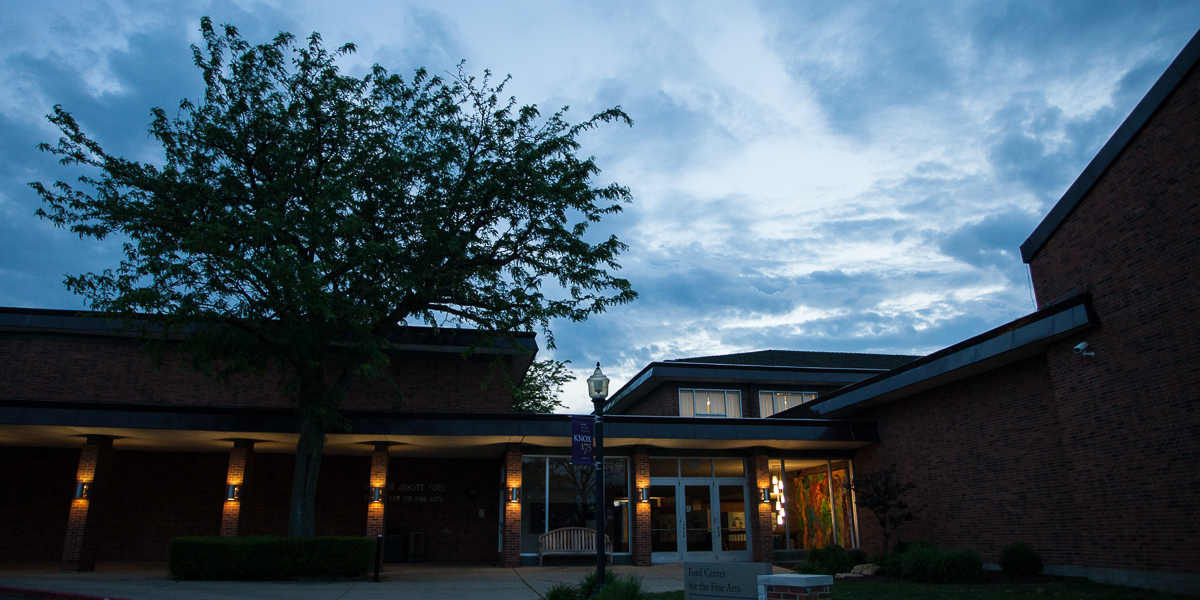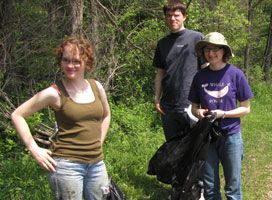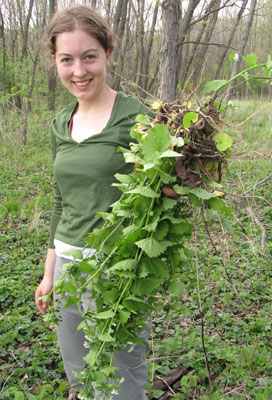

Venture Boldly

Adriana Colindres
Features Editor
2 East South Street
Galesburg, IL 61401

by Matt McKinney ‘13
Although pulling weeds on Mother's Day might seem a little unusual, Knox College students and faculty proved it was a task well worth their while.
Led by Jim Mountjoy, Knox associate professor of biology, members of the Knox community worked May 8 to remove garlic mustard plants from woodland areas at the Green Oaks Biological Field Station, located about 20 miles east of campus. The plant, which emits a pungent smell when crushed, was likely brought to the United States by European settlers in the 1800s, Mountjoy said. The invasive species can wreak havoc on natural habitats in the United States.
"Garlic mustard can have a major impact on the forest and wildlife once it gets established," explained Mountjoy, who is also the acting director of Green Oaks. "It can shade out the growth of young trees, seedlings, and actually poison other plants with secretions from its roots."
Garlic mustard has become a problem not just in Knox County, but across the United States. The Knox group worked for about three hours to remove the plants, which are known to grow up to 3 feet tall. They flower once every two years.
"Our goal was to stop the plant from spreading by attacking its front lines, instead of focusing on dense, established patches that might require alternative methods of removal," said Laura Jorgenson, a Knox senior from Dahinda, Illinois, who has majors in biology and history. "And by having the pull during this time of year, when the plant is flowering but has not yet developed seed pods, we were able to eliminate it without dispersing the seeds on our clothes."
The pull came in lieu of the annual Spring Prairie Burn, which was first conducted in the 1950s by Knox professor Paul Shepard. The burn typically is held at this time of year to protect prairie grasses from intrusions of woodland scrub and competition with "exotic" species. Mountjoy said that he didn't feel a burn was necessary this year, as it might destroy young trees and prairie flowers.
Despite garlic mustard's status as an invasive species, it isn't all bad. Jorgenson's mother found some recipes calling for garlic mustard as an ingredient, and she prepared a variety of those foods -- including venison, deviled eggs, and even brownies.
"They were all quite good," Mountjoy said.
The pull was part of Green Oaks' overarching mission of restoring its 700 acres of forest, grassland and aquatic habitats back to their natural state.
"Our Field Station does a great job in allowing students to get involved at Green Oaks, learn about the native flora and fauna, as well as allow us to do independent projects," said junior Steve Galdek, a biology major from Chicago Ridge, Illinois. "It connects students with nature by instilling a sense of responsibility to take care of our surroundings."
Founded in 1837, Knox is a national liberal arts college in Galesburg, Illinois, with students from 48 states and 51 countries. Knox's "Old Main" is a National Historic Landmark and the only building remaining from the 1858 Lincoln-Douglas debates.
Photos by Hongyu "Sophie" Zhou '14
Published on May 16, 2011